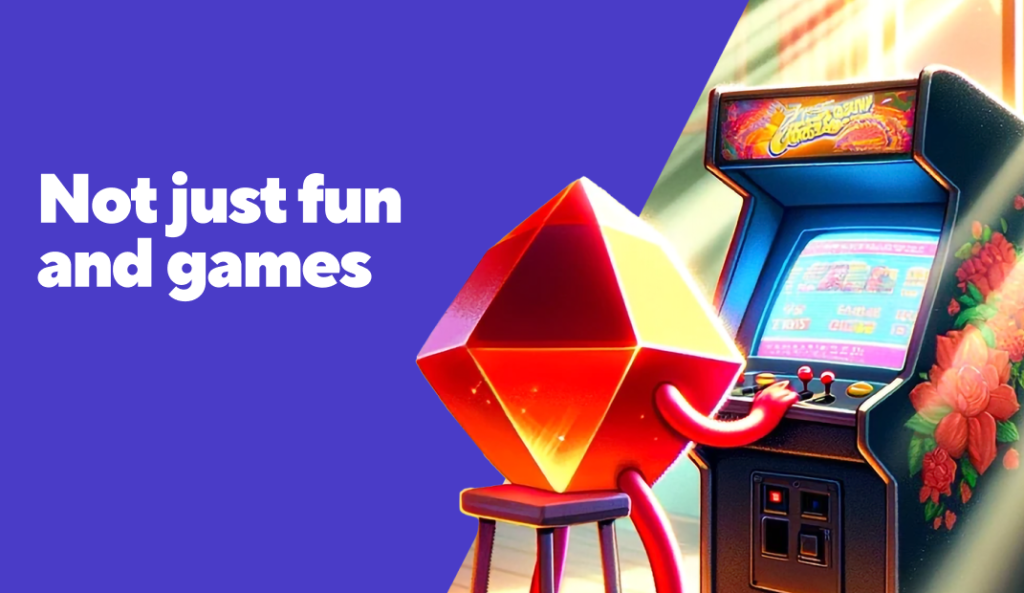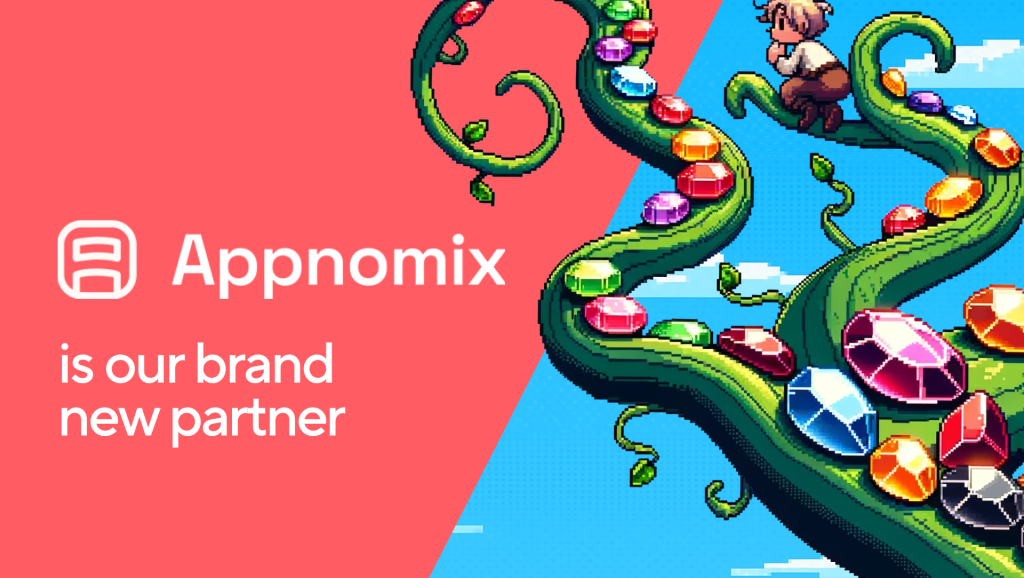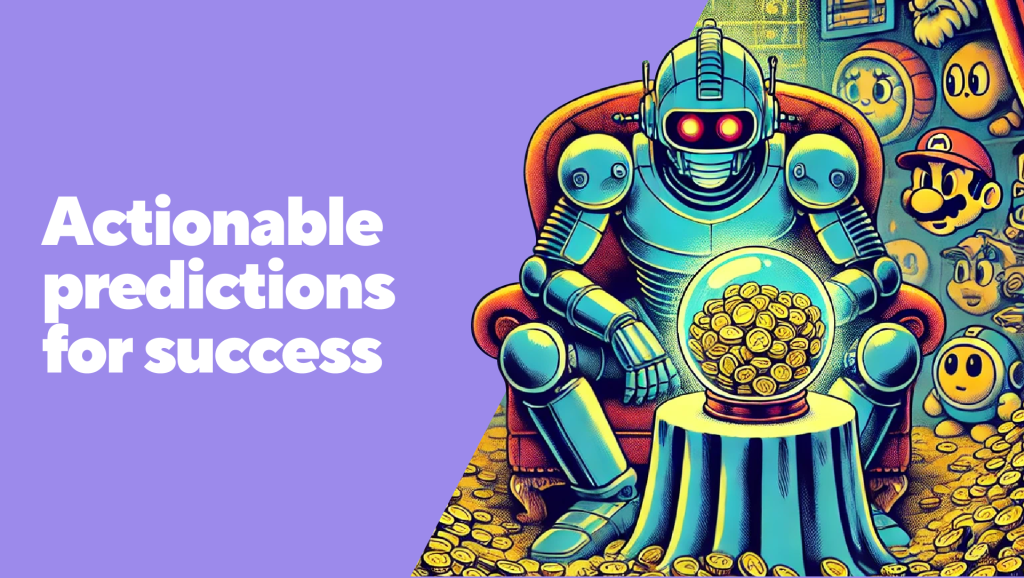One thing that can never be doubted about the world of mobile games is that it’s a seriously fast-moving industry.
Propelled by a range of forces including ever-increasing smartphone ownership, mobile games have enjoyed an almost uninterrupted period of growth. While that has stabilized in the years since Apple’s introduction of app-tracking transparency (ATT) forever changing how games market themselves and acquire users, mobile games continue to generate more than half of total gaming revenue worldwide.
Reliable mobile data analysts project that the mobile games market will generate revenue of over $125 billion in 2028. Statista’s games market insights also make several bold forecasts, anticipating big-time increases in user penetration and average revenue per user (ARPU) alongside other key revenue-focused metrics.
But let’s not forget why you’re here. It’s one thing to know about the scale of the mobile games market and another to know how to tap into it, especially when it’s experiencing its first major wobble. The truth is there’s no one-size-fits-all marketing strategy or solution for growing any given mobile game, and adopting a tailored approach to marketing hugely matters.
In this article, you’ll find several practical tips on how to build a mobile game marketing strategy, how to advertise a mobile game for success, and which advertising networks offer the right channels for your game. Grab your drink, and let’s go.
Mobile game advertising
Saying the video games industry is extremely competitive would be an understatement. This is especially true for mobile games due to their short shelf lives. Nowadays, advertising your mobile game is a rule, not an exception. There’s no other way around it: you have to promote your mobile game to attract players and rake in money.
Since you’re here reading this article, it’s a safe bet that you’re no alien to the term User acquisition (UA). In mobile game marketing, user acquisition refers to the marketing process developers employ to attract consumers. The goal is to have players download their games and interact with them. Ideally, your users generate money through either making in-app purchases or seeing ads while playing your game. Most popular mobile games are free-to-play, and though there are some that you can’t play without purchasing the title, these are becoming rarer.
Not too long ago, there was an era where young mobile game companies could join the ‘big league’ with comparatively fewer resources. Self-publishing without any external partners was easy and viable, but a lot has happened since then. Apple and Google made massive changes to how they handle user privacy, and this pivotal event made it harder for every mobile game advertiser to target high-quality users with low costs. While user acquisition costs for mobile games have risen drastically, the results become less predictable.
The number of mobile game launches decreased significantly due to these changes, and even low CPI (cost per install) is not a success guarantee for any mobile game. Unless you do some heavy lifting and use the right tools, you may end up attracting the wrong players for your game, leading to awful engagement levels and retention numbers.

What are the best practices for mobile game advertising?
Mobile game advertising is an extremely broad field, encompassing many different ad formats, channels, and strategies. Crucially, no single set of advertising solutions will work as well for one game’s growth as it will for another game’s growth.
There are, however, still some widely accepted ‘best practices’ in mobile game advertising, including:
- Understanding the remarkable diversity of mobile gaming audiences and the implications this will have for targeting your advertising.
- Drawing upon both organic and paid channels for marketing your mobile game – each has its benefits and drawbacks.
- Ensuring the optimal allocation of your mobile game advertising budget across not just one but multiple channels. Defining where ‘optimal’ is, however, is often more tricky than it sounds.
- Using the A/B testing method for your mobile game advertising efforts.
- Striking the right balance with various aspects of your advertising channel distribution – for example, allocating some of your budget to both predictable and more experimental channels.
- Using contextual targeting with your mobile game advertising in the absence of user-specific identifiers in a post-IDFA world.
- Trying out different ad formats – such as video ads, playable ads, and/or rewarded video ads – to help determine their effectiveness in driving your user acquisition and growth efforts for your mobile game.
Of course, this is just the tip of the iceberg. Let’s dig a little deeper and explore how you can promote your mobile game using both paid and organic channels. After all, your goal is to promote your mobile game in order to attract high-quality users and generate revenue. To do this, you’ll need to master both paid and organic advertising strategies as they complement each other.
Want us to manage your game?
Let us manage your game to greatness for share of uplift, with no upfront cost. Talk to us today if that sounds like a good fit for you
Paid vs organic mobile game marketing
To help you understand more about mobile game marketing in the current climate, this article outlines the many factors that can influence your advertising strategy. At the core of mobile game advertising lies picking the right channels for your paid marketing efforts, but this doesn’t mean organic marketing be damned.
As mentioned earlier, paid and organic strategies should complement each other. Having said that, many mobile games come with short expiration dates since they’re mass-produced and won’t live long enough to see the benefits of organic efforts.
We’ll first explore paid marketing campaigns as they’re more vital for advertising your mobile game. Paid marketing is the backbone of pretty much any mobile game marketing effort; therefore, this bit will be a long read. If you’re specifically interested in organic mobile game marketing, just skip this part. Otherwise, let’s dive right in.
Paid mobile game marketing
This marketing term refers to all paid strategies and tactics you can use to promote and advertise your mobile game to your target audience. However, among industry veterans, paid mobile game marketing usually refers to running ads through mobile ad networks to reach users and transform them into loyal players and paying customers. There are numerous exceptions, though. Here are two recent examples:
- Big mobile game companies can take a broader approach, though. For example, in early 2023, Dream Games (makers of Royal Match) launched a TV commercial aiming at 186 million fresh impressions via this strategy. Following this commercial (alongside other marketing efforts, of course), Royal Match eventually took the puzzle throne from Candy Crush Saga
- Tencent heavily promotes PUBG Mobile through esports tournaments. The Chinese giant also uses out-of-home (OOH) transit advertising (ads on buses and trams) strategies to promote PUBG Mobile whenever there’s a big in-game event coming up.
Needless to say, these mobile game companies stand out as outliers as they work with gigantic budgets, so, time to take a bite of the reality sandwich and come down to earth. In general, mobile game advertising involves using ad networks (such as Google Ads, Unity Ads, Meta, ironSource, and so on) to promote your game.
Typically, we find that using multiple networks and constantly testing a variety of creative options on different audiences helps create an optimal channel mix that delivers the best performance and return on ad spend (ROAS). This is also a great way to generate traffic to your game quickly with players of your desired targeting.
How to create a paid mobile game advertising strategy
Advertising is part of nearly every mobile experience; there’s no escape from it. Some users dislike this, but data shows that the majority appreciate the value exchange it offers in keeping content largely free. Mobile game advertising provides mobile game developers with golden opportunities to specifically target audiences based on their behavior and spending habits, demographic information, and more.
Whether they admit it or not, many mobile developers and publishers skip the most fundamental steps in paid mobile game advertising. Obviously, your ads should be well-crafted and well-placed in order to promote your game successfully, draw in new users, and generate revenue, but how can you get there? What types of mobile game ads are out there, and which types of ads are the right ones for your game? How often should you use ads, and where should you place them?
Narrow down your target audience
Even with all the resources at our fingertips, just one tap away, many misconceptions persist among brands about the demographics of mobile gamers. These include a tendency to underestimate the sheer number of gamers worldwide – reported in 2023 to be more than 3.09 billion – as well as to presume the average gamer is still a young male. The average age of a gamer today is actually 35.
The truth is, there are gamers of almost any and every demographic. So, you should be determining which audiences are already engaging with your mobile game, and considering which ones are likely to do so in the future. That might mean looking back at your previous campaigns if you have historical data.
Dynamic vs Static Mobile Game Ads
There are pros and cons to both options, but mobile game marketers usually opt for using dynamic ads. Dynamic ads can come in all shapes and formats. They can be banners, playables, interstitials, expandable ads, and more. They’re flexible and offer better targeting options compared to statics. That alone is a good reason why mobile game advertising usually happens around dynamic options.
Static ads are simpler. They’re easier to generate and cost less but also offer little to no flexibility. Depending on your game’s reputation, positioning, and popularity, they can be useful to maintain awareness and extend the game’s shelf life. However, the majority of mobile game advertisers tend to avoid static ads as their conversion rate is quite low and don’t offer much value anymore besides a few specific uses.
Experiment with different ad formats
Both traditional and more recently developed ad formats can help drive growth for your mobile game – and it might be difficult to know which ones would work best for your mobile game unless you try several of them.
Some of the more innovative ad formats that are widely used for mobile games today include video ads – which help give the player a more accurate sense of what the gameplay is like than a static image could – as well as rewarded video ads. The latter are often well-received because the consumer receives an in-game reward for watching them, and can often choose whether to do so. This means they can be effective advertising revenue generators for games.
Another extremely effective ad format for mobile games is the playable ad. This allows the viewer to experience a ‘demo’ version of the game, which enables them to imagine what it would be like to play the full game. In our experience, it is often a lot more engaging than a passively watched image or video, and this often shows when looking at the KPIs.
Got new, active or legacy games you feel are underperforming?
Let us manage your game to greatness for share of uplift, with no upfront cost. Talk to us today if that sounds like a good fit for you
The most popular mobile game advertising formats
There are many ad formats you can use to advertise your mobile game, but some are more popular than others and for a good reason too. Keep in mind that no matter which formats you choose, you should continuously test your advertising creatives, generate new ones, and build historical data for healthy performance comparison.
Mobile game advertisers usually prefer launching the following types of ad formats:
- Native banner ads
- Interstitial ads
- Rewarded ads
- Playable ads
Native banner ads
Native banner ads are simplistic rectangular ads that are usually found at the top or bottom of a game or an application. You may also come across them between levels, stages, and app sections. You can create banner ads in video, images, and text formats.
Objectively, they’re the easiest mobile game advertising options as they’re easy to make and don’t take much technical knowledge to implement. Most advertising networks use “smart banners”, meaning as long as you get the ratio and basic technical requirements right, your network should resize the banner according to the mobile device players are using.
Banners are a great form of advertising, and they go way back, but the core idea with them is increasing ad exposure rather than immediate conversion. Banner ads don’t interrupt the player/user experience. They’re simply there to increase your game’s reach and awareness. Don’t expect them to provide miraculous results; they just won’t.
We strongly recommend leaving a portion of your budget for native banner advertising, regardless of the size of your game. Remember what we said earlier? Never stop testing your ads, employ a broad approach, and diversify your advertising efforts.
Interstitial ads
Interstitial ads are one of the most popular ads mobile game advertisers regularly use. At the peak of hyper-casual games, they were one of the go-to advertising options. As you can guess, this advertising option likes to interrupt the player experience and take over the whole screen.
Interstitial ads can come in many different formats. They can be static, interactive, or just video. In the hands of a mobile advertising expert, interstitials have an incredible conversion rate. Interstitial advertising aims to convert rather than generate impressions or simply build awareness. However, they also offer higher CPM (cost per mille/thousand impressions), which can be both good or bad, depending on the quality of the player you acquire. When CPI and CPA were more reliable metrics, you could make a healthy guess about this, but in the current climate, it’s a bit less predictable.
Interstitial ads best work when they’re placed between levels in mobile games or at natural transition points in the flow of an app. The key takeaway here is to place an interstitial advertising creative without breaking the game/app flow; otherwise, you may end up alienating your users and driving them away from your game.
Plus, displaying interstitial ads between these natural points allows you to ensure your creative is cached beforehand. Native banner ads are small in size, and they can be loaded pretty much immediately. Meanwhile, interstitials must be cached in time for a hiccup-less ad experience as they’re larger and need to be cached first.
Finding the right balance with interstitial advertising is also extremely important. Be the user and be the player. Frustrated users are harder to retain, and some users are quite impulsive too. No matter if you’re the advertising party or the app/game owner, always consider the user perspective when making and placing interstitial creatives.
Rewarded ads
With the emergence of hybrid-casual games, hybrid monetization models are becoming “the” new trend. Even the most simplistic casual games now include several meta layers, enriching the player experience and allowing them customization options, extra moves, or power-ups. And how are these options unlocked? You guessed it right, either through in-app purchases or rewarded ads.
Rewarded ads are quite simple, and you can get extremely high eCPM through them. The two great things about the rewarded advertising model are:
- Players tap on the reward ad willingly because they’ll earn something out of it.
- Advertisers love them as well because the payment only happens when the user takes the desired action, be it interaction with an element or just watching the ad to the minimum desired point.
Rewarded ads are somewhat liked by players as well, at least by advertising standards. Provided the right balance is achieved, players won’t find this form of mobile advertising obtrusive. Win, right?
Not that there’s any escape from the giant mobile game advertisers, but one important detail to keep in mind as a smaller advertiser: your game may end up showing ads for your direct or indirect competition. Play any Match-3 game today, and you’ll see an interstitial ad from either Royal Match, a Scapes game, or Candy Crush.
As a mobile game advertising expert, you’ll also want to set the frequency and length of rewarded ads properly, preferably based on player behavior data you continuously collect. If your rewarded interstitial is too long or requires too many actions to shut down, users may get bored or frustrated quickly and eventually abandon your game.
You can get quite creative with rewarded ads. For instance, Supercell-backed Space Ape Games uses rewarded ads to let you unlock new songs and mix gaming elements with rewarded ads.
This year saw many puzzle game developers launch new content that’s designed with the rewarded ads in mind. It can be as simple as adjusting the difficulty to a point where the player barely finishes a level with the help of a power-up or misses the mark by just one move and ends up watching the rewarded ad for extra moves.
Playable ads
These are interactive ads that allow ad viewers to experience a chunk of your mobile game. Advertising your game through a playable ad is great because it allows potential users to test-drive your mobile game, and you get to choose which part of the gameplay they get to experience.
Mobile game developers use playable ads to persuade users to make a full commitment to downloading their games. Developers and publishers tend to choose action-filled parts of their game or mini-games within the actual game (often seen in casual puzzle games) and turn them into playable ads. Some even create instances where the actual gameplay barely resembles what’s experienced during the playable ad experience.
Another example is city-building RPG games. For instance, State of Survival: Zombie War is an RPG game where you fight to survive in a zombie apocalypse. The game’s core loop requires players to spend resources to produce more resources, which can then be used to upgrade production and continue the cycle. You must also divert some of these funds toward constructing and upgrading military and research facilities in order to protect your base from the zombie hordes. With these buildings, you can train troops for your army and develop new technologies to improve your base.
You get the gist, it’s a base-building/protecting game, but the game’s playable ads are made up of small action-filled moments. To be fair, this is part of the actual gameplay experience, but not even included in the core loop and is skippable. Meeting a new player with this bit that’s full of fun and engaging action, however, allows the game to retain the newly acquired user and then throw the base building part into the mix.
Playable advertising is effective, yields great results and depending on the quality of the ad creative, your chances of conversion are extremely high. Having said that, this type of advertising has many components to test and optimize further down the line, meaning it’s not easy to produce or implement. They’re also costlier, but in our book, definitely worth the effort.
Want us to manage your game?
Let us manage your game to greatness for share of uplift, with no upfront cost. Talk to us today if that sounds like a good fit for you
Best mobile game ad networks for advertising and UA
As we stated earlier, different ad networks suit different mobile games. The exact channels you choose will likely depend on the relevance of their specific strengths and features to your circumstances, goals, and mobile game. You might be influenced by such factors as affordability, conversion rate, and the scope to optimize and measure your advertising campaigns.

When we talk about mobile game advertising ‘channels’, we are referring to what is often called “ad networks” or “user acquisition networks (UA networks)’. The more users your mobile game can acquire and retain over time, the more easily it can generate the revenue needed to fuel its growth.
As we touched on above, different mobile games are suited to different advertising approaches, and different mobile games are also suited to different ad networks.
Hence, it’s important to treat the following list of user acquisition channels (there are more) as merely some of the most proven and renowned networks currently available, which may or may not be suitable for growing your mobile game:
Facebook/Meta
Advertising is the most important element in acquiring users for your game. Depending on the perspective, It’s the first step in monetizing your game. Despite losing popularity with Apple’s depreciation of IDFA and Google’s recent privacy changes on Android, Meta still proves to be the most popular ad network across a number of important metrics.
The platform still stands out as one of the go-to options for initial CPI testing and saw the most ad creatives for both Apple and Google stores. While other ad networks are growing in popularity, Meta’s targeting options (such as location, demographics, behavior, platform, devices, and so on) make it a good choice, but sadly, the costs are rising here while targeting accuracy is taking a hit. However, that’s not a Meta-specific problem.
Meta can show your ad creatives on other platforms such as Messenger (which has been a separate app for quite some time now), Instagram, and Audience Network.
Google Ads
Stating the obvious here, Google Ads is one of the safest choices when it comes to advertising your mobile game, especially on Android. Not only is it great for user acquisition, but also a great option for retargeting and retaining users. It’s also a great way to track the success of your ad campaigns. Google Ads also offers a wide range of targeting options, making it a powerful tool for reaching the right audience.
Yet another obvious fact about Google Ads: You get to advertise your game on the biggest search engine on the planet – including the ability to display ads in mobile apps. In fact, most SEO experts count YouTube as the second largest search engine, meaning Google Ads offers a staggering reach capability you can’t find elsewhere.
Just like Meta, Google Ads also offer extremely detailed targeting options, and your ads can pop up on popular Google platforms such as Google Play, YouTube, Search, AdMob, GDN, and more.
Another great benefit is you can find numerous official guides to get you started or turn you into a Google Ads expert. The platform also provides automated support to help you get the best value for your campaign, but of course, it’s just a help system and unlikely to match your experience and player data. You know your game and ad creatives the best.
Apple Search Ads
If you’re launching an advertising campaign to target Apple users, then your first go-to address is Apple Search Ads. This is Apple’s official ad network, and it helps people discover your app on the App Store through highly detailed targeting options.
It’s your typical auction-based system. You get to control your advertising budget, and to be on top, you should be willing to pay for a tap that is the bid of your closest competitor + $0.01. Apple users tend to generate more revenue, but they’re also costlier to reach. As always, never forget that the more competitors there are in your target area, the higher the price will be for reaching the top advertising spot.
“The App Store for iPhone and iPad connects businesses of all sizes with over 650 million people each week,” says Apple, and while the sheer number of users is definitely impressive, it also means you have to optimize your campaign thoroughly. You have less room to make mistakes here as you’ll burn through your budget at a faster rate. Luckily, Apple provides all the necessary tools and enough data to kickstart your ad campaign.
Unity Ads
You should take a broad approach in your game promotion strategy, and unless you have a very specific goal in mind, Unity Ads should be included in your plans. Unity Ads offers a wide variety of tools and a powerful analytics platform that’s powered by AI. Using this platform allows you to reach your target audience effectively, and they also offer guidance on how you can create and implement in-app ads or how you can monetize your app/game through in-app purchases using their network.
This platform natively integrates many different ad formats into games that may or may not have been made on the Unity platform. All you need to do is set your goals, decide which audiences to target, choose the type of campaign you want to launch, and connect to the “Unity Ad Exchange”, the ad network’s first-price auction with over 60 demand sources from a single SDK.
Unity is also a technology and game engine developer, especially popular in the mobile games scene despite recent setbacks. This means they understand where game makers are coming from and give you options to target users who show interest in specific game genres. This used to be an extremely unique feature, but nowadays, most companies offer target audience data for free and in high detail. Regardless, having this kind of data in nearly full accuracy can be a game changer for a smaller studio.
ironSource
This is one of the best-known names in the mobile industry, and they joined forces with Unity through a dramatic merger in late 2022. ironSource heavily promotes its playable ads muscles, and for a good reason too, but their services come in many sizes and shapes.
It offers good data tracking options, supports all the modern mobile advertising formats, and overall is a good option to diversify your marketing efforts.
You also have other options, such as:
- AppLovin, which, with its machine learning technology, has a great track record of helping to optimize monetization.
- Mintegral, which is a global mobile ad platform dedicated to helping clients with a one-stop mobile advertising solution.
- Tapjoy, which is the industry leader in the offerwall category – this term refers to an app monetization strategy that rewards users for the completion of specific tasks.
The above options are far from the only ‘channels’ that you might conceivably use to spread the word about your mobile game. That’s because there are also many slightly less formal marketing channels available for mobile games, ranging from promoting your game in indie dev forums to posting on relevant Facebook groups and sharing screenshots and short videos on Instagram.
Influencer Marketing
This advertising strategy can fall under both organic and paid marketing. If your game is trending and making waves, chances are quite high for influencers with big followers to pick it up and play on live stream or upload content to their preferred content creation channels. In this scenario, you don’t pay anyone anything, and everything happens organically.
But there’s another version. You may allocate a portion of your advertising budget for influencer marketing in order to use their following to promote your game, reach new audiences, and other goals you may have set at the beginning of the campaign. Perhaps, your goal is to make your game go viral, and you’ll partner up with high-profile influencers with a big following that matches your target audience. Since you’re paying the influencers, it’s no longer an organic situation but a paid strategy.
Either way, influencers can help you boost your game’s visibility like no other. Some mobile games in the recent past found success through TikTok trends and became big players in the industry themselves.
Make sure to pick the right influencers for your goals. Ideally, they’ll become your game’s and company’s advocates, increase your game’s engagement rates, and rake in more revenue. However, picking the wrong person for your game’s promotion can also backfire and hurt your game’s credibility.

Organic mobile game marketing
Organic mobile game marketing is often overlooked. This is where even the biggest publishers often miss the ‘low-hanging fruit’. Organic marketing efforts are more time-consuming, and they tend to take a couple of months before you can start seeing results. Considering how the expiration date arrives within weeks for most newly launched mobile games, developers and publishers often overlook the importance of organic efforts.
App Store Optimization (ASO)
In organic mobile marketing, you use your own channels to increase reach and awareness and acquire new players. Organic marketing for your mobile game starts at the storefronts; the two most popular ones are Google Play and App Store.
Mobile app data providers have reported that around 70% of visitors to the App Store rely on the marketplace’s search feature to discover new apps. Furthermore, their data indicates that approximately 65% of app downloads occur immediately after a search on the App Store. This highlights the importance of optimizing app titles, visuals, call-to-actions, descriptions, and keywords to ensure that they are more likely to appear in search results and ultimately attract more downloads.
Every single top-performing mobile game has a nearly flawless store page. While ASO won’t generate massive immediate results on its own, mismanaging it or not paying enough attention to it can harm your advertising and UA efforts in the long run.
Social Media Channels
You can also use social channels such as Facebook, X (formerly Twitter), TikTok, Instagram, and others to establish a persona for your game or regularly post content on your website. For building communities, Discord is the ideal platform to be active right now, and it provides you with a direct line with actual players. However, the larger your Discord channel is, the harder it becomes to manage, moderate, and maintain the community. Make sure to have a team member who can dedicate enough time to run your live platforms.
Organic marketing tends to be more time-consuming and can be difficult for smaller developers. Not only this, but it can often be many months before marketers begin to see results.
Paid marketing, whilst effective, can be a money pit, especially since Apple’s ATT privacy changes. Many marketers are uncertain of what their best creatives actually are, given the lack of data available from Apple’s SKAN/SKAdNetwork.
How to spend your mobile game marketing budget with confidence post-IDFA
There are a lot of decisions that you’ll need to make if you’re to use your finite advertising budget in ways that genuinely and sustainably grow your mobile game in a post-IDFA environment. Given the decline in data visibility, making decisions with confidence is inevitably low, which is where our Game Management services deliver for our partners. Not only do they harness our powerful predictive dashboards, but you’ll get a dedicated team to help grow your game.
For a 15-minute exploratory call, please get in touch.













